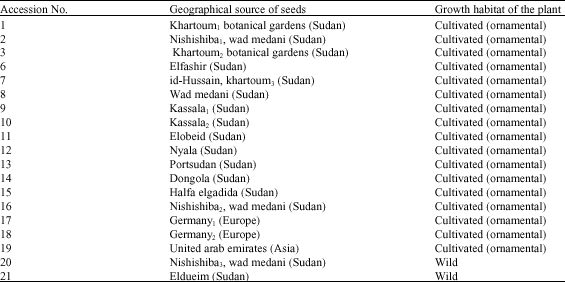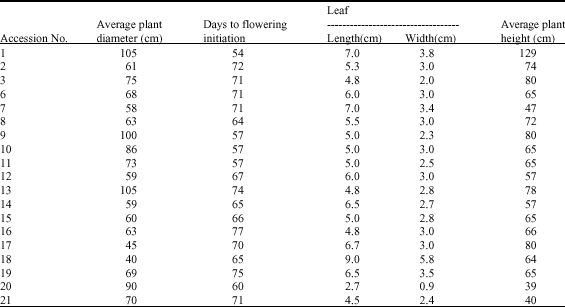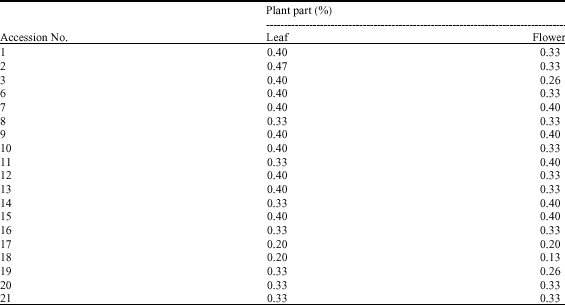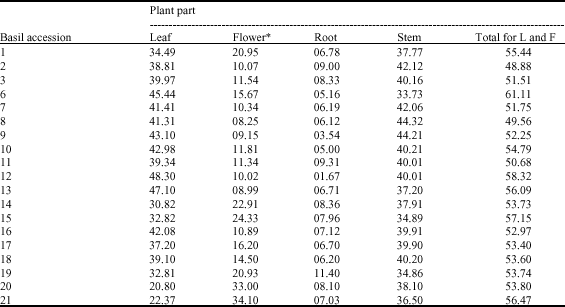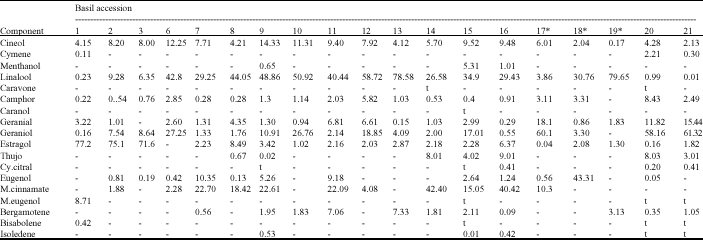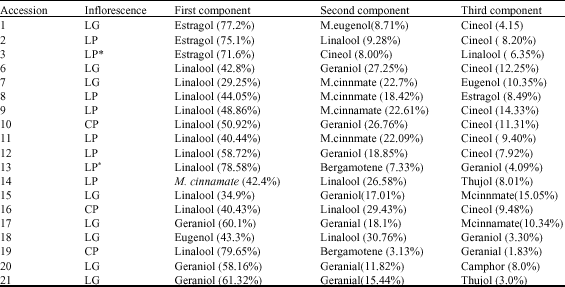Research Article
Morphological Variability and Chemical Composition of Essential Oils from Nineteen Varieties of Basil (Ocimum basilicum L.) Growing in Sudan
University of AlFashir, AlFashir, Sudan
S.A. Elhussein
University of Gezira, Wad Medani, Sudan
N.A1. Osman
University of Gezira, Wad Medani, Sudan
A.H. Nour
University Malaysia Pahang, Malaysia









